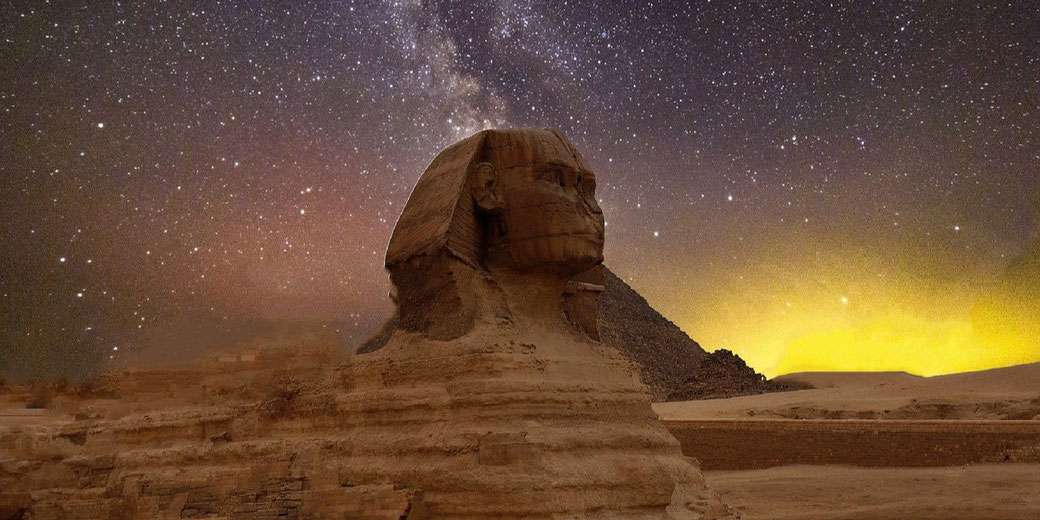The Great Sphinx: exploring the enigma of its creation and purpose

The Great Sphinx of Egypt has long been a source of fascination and speculation for historians and archaeologists. Its massive size, intricate details, and enigmatic expression have sparked countless theories about its creation and purpose.
While there is still much debate about these topics, recent archaeological discoveries have shed new light on the history of the Great Sphinx.
What is the Sphinx?
The Great Sphinx is believed to have been constructed during the reign of the Pharaoh Khafre, who ruled Egypt from approximately 2558 to 2532 BCE.
The statue stands approximately 66 feet tall and 240 feet long, making it one of the largest monolithic statues in the world. It is carved from a single piece of limestone and depicts a lion's body with a human head, believed to be that of Khafre himself.
A sphinx is a mythological creature that typically has the body of a lion and the head of a human, although some variations depict the creature with the head of a falcon, ram, or other animal.
In ancient Egypt, sphinxes were typically depicted as having the head of a human and the body of a lion, and were associated with guardianship and protection. The Great Sphinx of Giza in Egypt is one of the most famous examples of a sphinx.
Why was it built?
While the Great Sphinx has long been associated with the Pharaoh Khafre, there is still much debate about its purpose. Some believe that it was constructed as a guardian of the Giza Necropolis, where the pharaohs were buried.
Others suggest that it was a symbol of the pharaoh's power and authority, while still others believe that it had a religious significance.
One theory that has gained traction in recent years is that the Great Sphinx was part of a larger complex of temples and monuments. Excavations in the area have uncovered evidence of a massive temple dedicated to the worship of the sun god Ra, as well as a series of smaller temples and tombs.
This suggests that the Great Sphinx may have been part of a larger architectural plan designed to celebrate the power and glory of the pharaohs.
What don't we know?
Despite these discoveries, much about the Great Sphinx remains shrouded in mystery. For example, it is still not clear how the statue was originally painted, or what color it may have been. Some scholars have suggested that it was painted in bright colors, while others believe that it was left unpainted.
One surprising point of contention is about the statue's face. It is often described as having a mysterious and enigmatic expression, but it is not clear what this expression might have meant to the ancient Egyptians.
What about the mysterious tablet found with the Sphinx?
An ancient table, known as the Dream Stele, has fascinated people for a long time. The Dream Stele is an ancient Egyptian monument that is located between the paws of the Great Sphinx in Giza, Egypt.
Also known as the Sphinx Stele, it was erected by the Pharaoh Thutmose IV in the 14th century BCE, during the 18th dynasty of Egypt.
The Dream Stele is a large slab of pink granite that is inscribed with hieroglyphs that describe a dream that Thutmose IV had while he was still a prince.
According to the inscription, Thutmose was out hunting when he fell asleep in the shadow of the Great Sphinx. In his dream, the Sphinx spoke to him and promised to make him king of Egypt if he cleared away the sand that was covering its body.
After waking up, Thutmose did as the Sphinx had instructed, and was eventually crowned as pharaoh. As a result, he believed that the Sphinx had granted him divine favor and protection, and he erected the Dream Stele as a testament to his connection with the powerful statue.
The Dream Stele is significant not only for its depiction of Thutmose IV's dream, but also for the information it provides about the history of the Sphinx. The inscription suggests that the Sphinx was already an ancient and revered monument by the time of Thutmose's reign, and that it was already surrounded by sand that had accumulated over the centuries.
The mystery lives on
Regardless of its original purpose and appearance, the Great Sphinx remains a powerful symbol of the ancient world. Its massive size and intricate details are a testament to the skill and creativity of the ancient Egyptians, while its enduring presence is a reminder of the enduring power of human civilization.
As archaeologists continue to explore the mysteries of the Great Sphinx, we can only hope that it will reveal more of its secrets in the years to come.
What do you need help with?
Download ready-to-use digital learning resources
Copyright © History Skills 2014-2025.
Contact via email
With the exception of links to external sites, some historical sources and extracts from specific publications, all content on this website is copyrighted by History Skills. This content may not be copied, republished or redistributed without written permission from the website creator. Please use the Contact page to obtain relevant permission.





